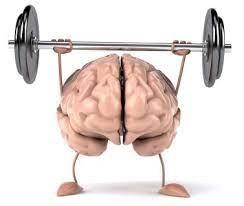

Cultivating Resilience
Nurturing the strength within you.



Resilience (n):
1. The ability to recover readily from illness, trauma, adversity or the like; buoyancy.
2. The ability to return to form after being bent, stretched or compressed.

What is Resilience?
MYTH: Resilience is a genetic trait.
MYTH: You either have it or you don’t.
TRUTHS:
We are born with innate resiliency, an inborn capacity for “self-righting”.
Resilience is found in a variety of thought processes and behaviors.
Factors contributing to resilience can be cultivated and practiced.
Resilience develops as people experience life events that expand their thinking, fine tune self-management skills and increase knowledge.
Resilient individuals are not immune to stress & hardship


Responsive


Most people who experience a major life crisis have feelings of grief, anxiety, anger…

Growth comes not from rigid resistance of these feelings rather from the struggle inherent to coping and living with them.
Issue + Resistance = Suffering
We can’t control all the pain in our lives. We can control the amount of suffering we have in response to that pain.

How have you made it this far?
Take Inventory:
What has helped you through hard moments?
When you struggle what helps you get through that one day? Be specific.
What would someone who cares about you say about how you face challenges?
Are there specific people you turn to who:
Comfort you, Help you find perspective, Break a problem into parts, Find humor, Provide balance, Redirect your attention
The Mental Gym: Cultivating resilience muscles
Focus on 4 Components
1. Connection
2. Wellness 3. Healthy Thinking
4. Meaning

BUILDING CONNECTIONS
Humo r Sense ofIdentity Communicative
You are not alone.
Stress can cause some people to withdraw (flight) and isolate.
FEELING
Friends
Make an effort to engage with others.
Find the audience you need today. Medical Professionals
Friends & Family Cancer Survivor Peers
YOU
Friends RESPITE
Friends
Help Seeking
Able to Self Soothe

FOSTER WELLNESS
Back to Basics:
Awareness Self Compassion
Sleep, Eat, Drink water, Breathe, Move
Cultivate a habit of noticing how you are doing.
“How am I doing?” ”What do I need?”
Log your mood
Observe the ups and downs & learn your rhythm
Carve out stillness in each day
Prayer, meditation, quiet walk, yoga, journaling
Able to set Boundaries
Notice and avoid what hurts you.
”How can I be helpful, not harmful?”
EMBRACE HEALTHY THOUGHTS
Challenge yourself to identify your Thought Traps

Catastrophizing, All or Nothing, Comparing, Minimizing and Maximizing
Find more truths. Work to list other possibilities. What is. What else. What’s left. What then?
Critical Thinkers Creative Problem Solvers
Balance your thinking
Uncertainty & Fear with Hope & Possibility
Find where you have control.
What questions do you have? Can you
Flexibility Goal Oriented

FIND PURPOSE
Values are your North Star.
What are your values? Characteristics, activities and/or people.
AdaptabilityFaith
Turn your attention to something (or someone) outside of your struggle
Discover self-worth and personal value.
Identify needs, connect them with choices.
What actions might meet your unmet needs? Set small goals
Daily goal, Insight-driven goal, Selfcare goal, Value-oriented goal
Post-Traumatic Growth
When a life event “shakes us to the core”

Adversity can unintentionally yield changes in the way we understand ourselves, others and the world around us.
Difficult life events challenges long held beliefs and perspectives we have held about ourselves, others and the world demanding us to see things in a different way.
Post-Traumatic Growth is more than simply bouncing back, more than preserving through a challenge. PTG reflects a true shift in one’s perspective.

Nurturing Post-Traumatic Growth
Pay attention to opportunities for growth within moments of struggle.
Reframe your stress response from threat to challenge.
Connect affirmation statements with concrete examples
Stay focused on the personal values that guide you?
The Affirmation Cautionary Statement
Connect your affirmations to action statements.
“I am strong when I am honest about my limits and don’t pretend that I am ok.”
”I am doing the best I can when I take time to notice how I feel and what I need.”
“I love myself when I take time to go for a walk or get to bed on time.”


